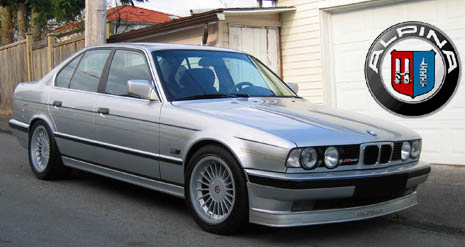Typically "looks too good to be true" usually is too good to be true.Originally Posted by e34.535i.sport
You would need a large and powerful blower to create any appreciable pressure at the volumetric flow rate your engine requires anywhere in the powerband. This is additionally problematic because it would have require significant current at operating speed. This current draw would put a significant load on your electrical system when operating, hence create a large back-EMF in the alternator assembly which would have to be made up as a parasitic power loss from the crank. Unless electric blower technology gets much better very quickly it is not likely that any additional power output from the engine would make up for the alternator loss. Additional problems include plumbing it so as not to create a flow restriction when not in operation, etc.
If you could find a blower that would meet your flow, pressure and fitment requirements, not occlude the intake while not in operation and not put a drain on your alternator (perhaps by use of its' own dedicated battery supply, etc.) you might be onto something. Any performance improvements of such a system would also have to overcome the effect of additional mass due to the power supply, etc.
So far nobody has done this and although that doesn't strictly mean it's impossible, it certainly doesn't look like that particular batch of engineering challenges has a workable solution.
Enjoy!
Fusion
p.s. - this is why the typically preferred method of supercharging the engine has been by capturing energy from the exhaust gases. A traditional driven supercharger puts a large parasitic power drain on the engine (the air pump or blower is being driven by the crank) and thus needs to provide additional power advantages to overcome its' own power demands. So a supercharger that requires 20 hp to drive at full output has to provide more than a 20 hp advantage to make up the difference.
Supercharger technology does continue to improve and it seems that advances in supercharger drive schemes and blower geometry are making significant gains in improving the ratio of additional power delivered to power required. For example, see some interesting developments in hybrid supercharger geometries, planetary geartrains, upstream throttle valve assemblies, etc. such as found the nautilus unit developed by ASA/Infinitas in cooperation with Alpina for the new B5 and B7s. Some of these technologies are just recently finding their way into automotive applications.
Please note that this is intended to be just a brief explanation of supercharger and turbocharger efficiency vis a vis your original question about the electric supercharger, whose main weakness (if it could be made to work at all) would be its' energy efficiency. I don't want to run down your original question about the electric supercharger, nor superchargers in general, nor to inflate the benefits of turbocharging vs. supercharging, etc. There are plenty enough opinions about all of that out on the internet for you to read.







 Reply With Quote
Reply With Quote